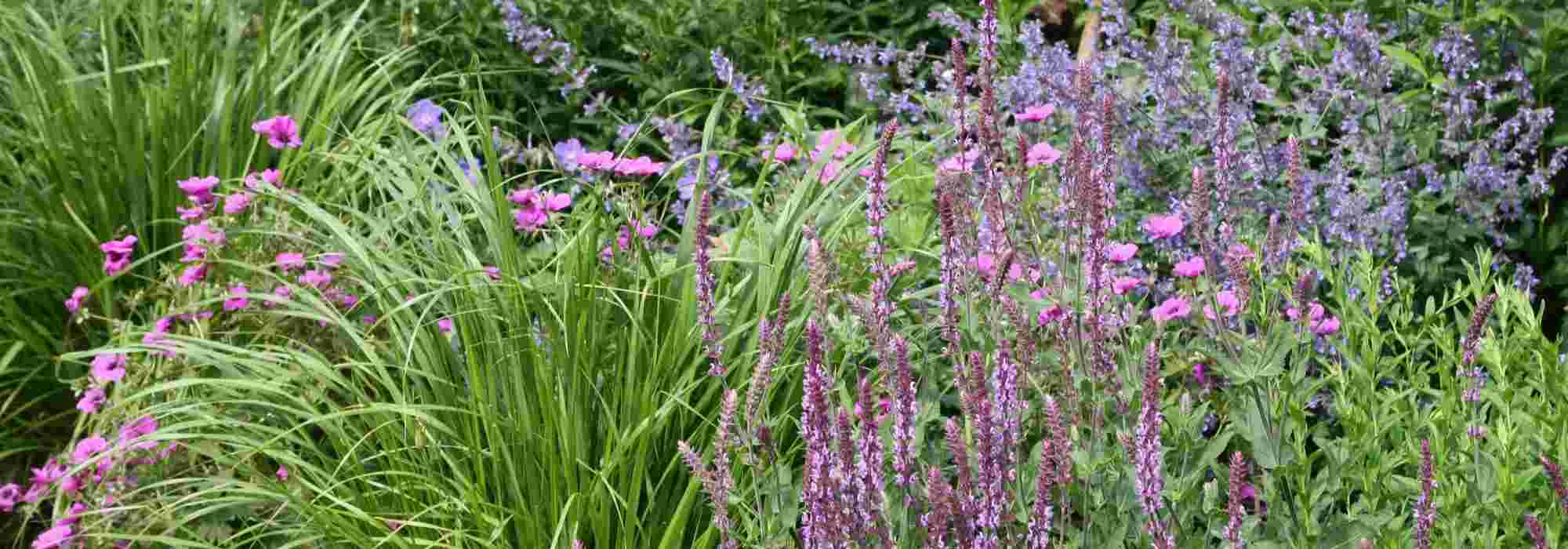
7 successful plant combinations for a full-sun border
our ideas and advice
Summary
Combining young plants isn’t always straightforward and even less so in full sun. Indeed, sunlight from our favourite star has the unfortunate tendency to wash out colours, making lighter ones bland. Whites become blinding while some purple flowers may fade or even scorch.
Discover our pairing ideas to create a successful flowerbed in full sun according to the ambience you fancy!
Naturalistic ambience
Naturalistic gardens combine light, airy plants for natural effect. That’s why they favour grasses. These ‘daughters of the wind’ are unrivalled at enlivening the garden. They undulate at slightest breeze, offering a truly delightful sensory display. Grasses therefore constitute the bulk of this bed which is then punctate with a few touches of colour provided by scabious and cosmos.
It’s a bed of great lightness requiring very little maintenance.
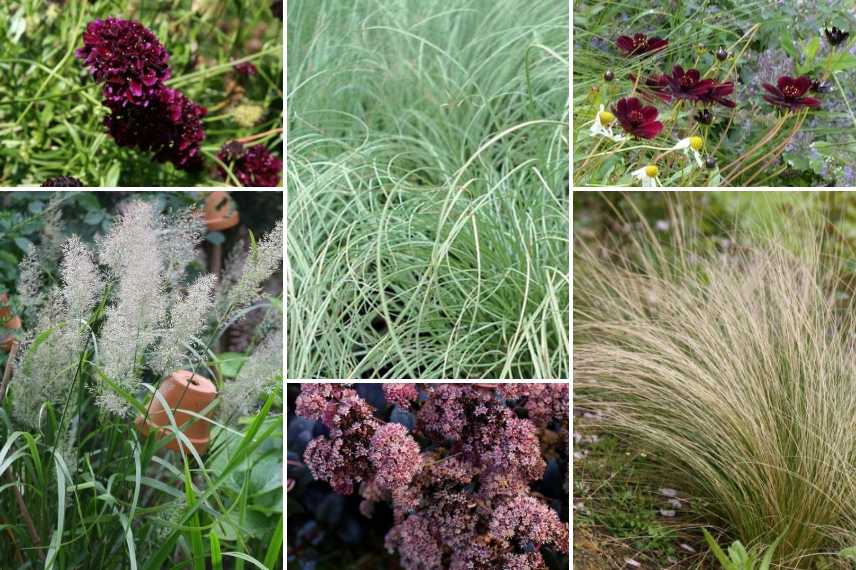
Scabiosa (‘Beaujolais Bonnets’, ‘Chile Black’, ‘Black Night’) , Calamagrostis bachytricha, Carex comans ‘Frosted Curls’, Sedum ‘Purple Emperor’, Cosmos atrosanguineus ‘Chocamocha’ and Stipa tenuifolia
What type of soil?
This composition suits light, free-draining soil. In heavy soil, drainage must be improved by adding a draining material.
⇒ To learn more about draining materials, consult our advice sheet : “Turf, sand, perlite, clay balls, pumice… what are they for ?
A "So British" ambience
A mixed-border layout always makes an impact! Plants are then arranged in a balanced, harmonious way to create a lush bed. A long, narrow border works particularly well. Plant the same plant several times to repeat a motif. You can intersperse grasses (Calamagrostis, Mulhenbeckia, Panicum), spring bulbs (daffodils, muscaris…) and asters to flower in autumn.
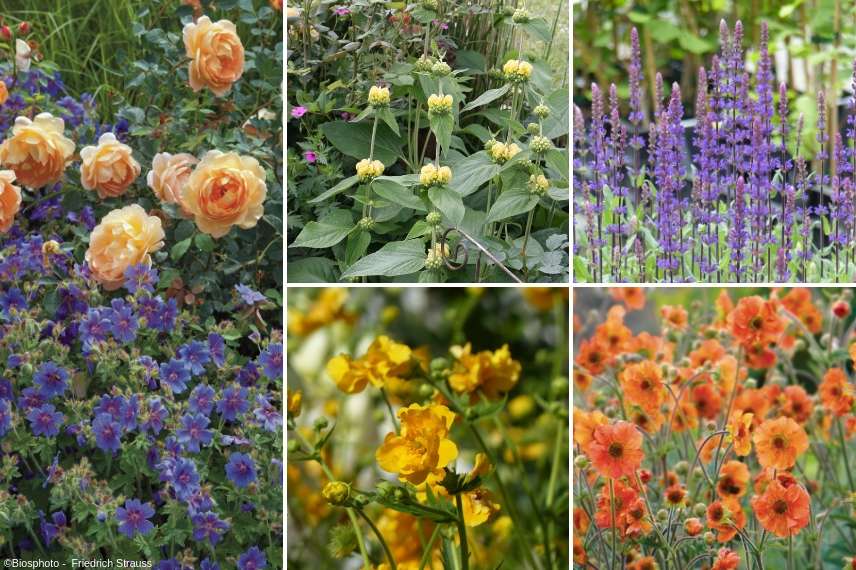
Rose ‘Lady of Shalott’, Geranium magnificum, Phlomis russeliana, Salvia nemorosa ‘Caradonna’, Geum ‘Lady Stratheden’, Geum ‘Totally Tangerine’
What type of soil?
Ordinary soil works very well provided it doesn’t dry out too much in summer.
Montane ambience
For a very sunny rock garden, turn to plants whose water needs are very low, camel plants or small alpines. Imagine a rockery adorned with houseleeks, pinks, wall bellflowers, etc… Moreover, maintenance is almost non-existent!
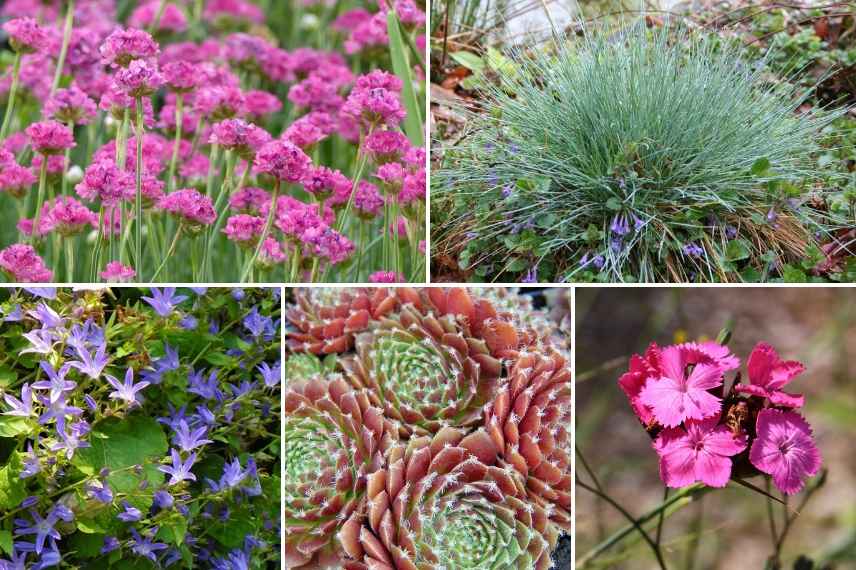
Armeria maritima ‘Düsseldorfer Stolz’, Festuca glauca, Campanula poscharskyana ‘Stella’, Sempervivum ‘Silberkarneol’ et Dianthus carthusianorum
What type of soil?
This setting will be perfect in well-drained, light, poor and stony soil, even calcareous.
Contemporary ambience
For a contemporary mood, agaves and agapanthuses work wonders! This border is a compound of shades of grey and blue for a very soft, elegant effect.
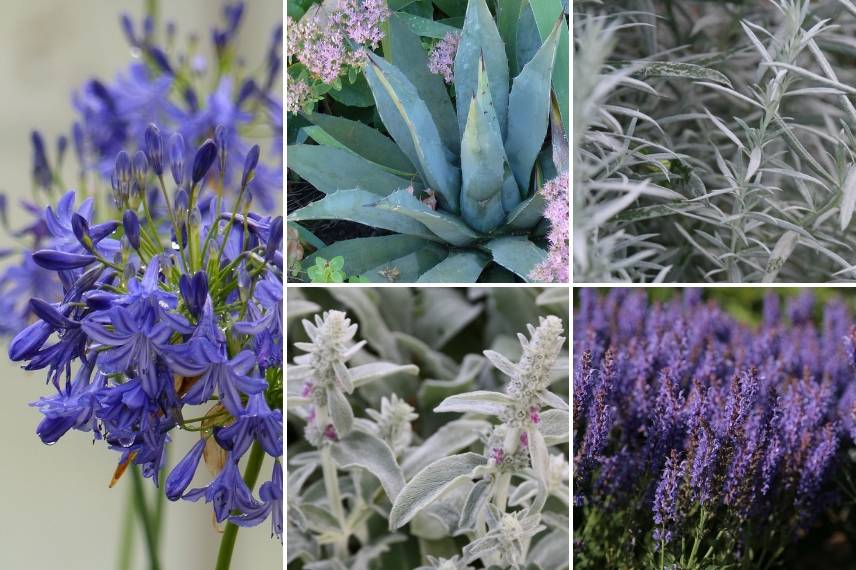
Agapanthus ‘Northern Star’, Agave havardiana, Artemisia ludoviciana ‘Silver Queen’, Stachys byzantina and Salvia nemorosa ‘Blauhügel’
⇒ My tip: pinch Artemisia to make it compact. To do this, use a shear to cut back and remove one-third of stems around Mother’s Day.
What type of soil?
This border requires light, well-drained, even dry soil. It is, in fact, essential to preserve Agave. It is extremely hardy (to below −15°C) but only in perfectly drained soil. Otherwise replace it with a Yucca. The same applies to Agapanthus, which will tolerate about −12°C in drained soil and in a sheltered position. Alternatively, you can also choose a hardier agapanthus.
Romantic ambience
Creating a romantic flower bed is not very difficult. Simply choose plants in pastel shades. Choose roses whose colour is not too pale. ‘Harlow Carr’ suits this situation well, as does ‘Munstead Wood’, an essential whose purple colour does not fade in strong sunlight.
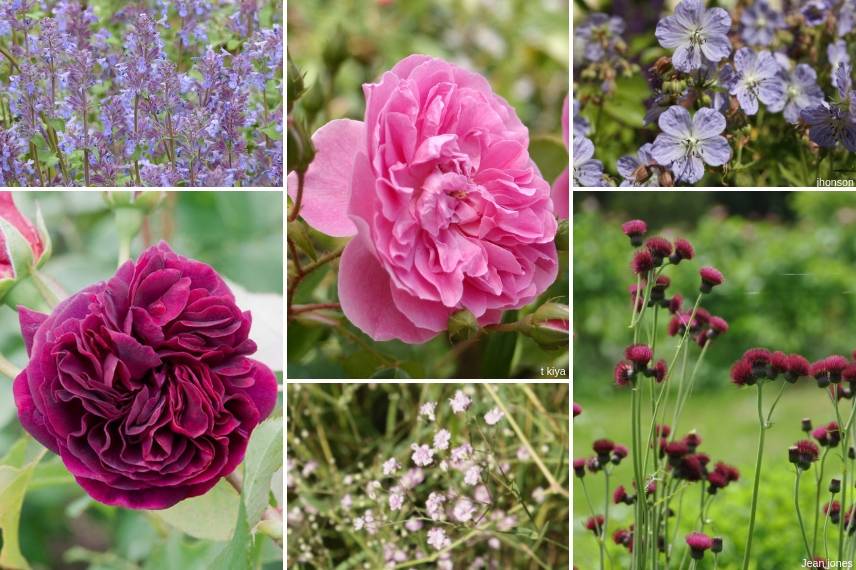
Nepeta faassenii ‘Six Hills Giant’, Rose ‘Munstead Wood’, Rose ‘Harlow Carr’, Gypsophila paniculata ‘Flamingo’, Geranium pratense ‘Mrs Kendall Clark’ and Cirsium rivulare ‘Atropurpureum’
What type of soil?
Rich, cool, well-drained, non-calcareous soil (English roses do not like excess lime) will be perfect.
Mediterranean ambience
Mediterranean ambience will transport you straight to cicada country! Lavender and santolina are must-haves, plant them without restraint! Stipas, silver mulleins and Buenos Aires verbenas are short-lived perennials but numerous spontaneous sowings ensure their survival.
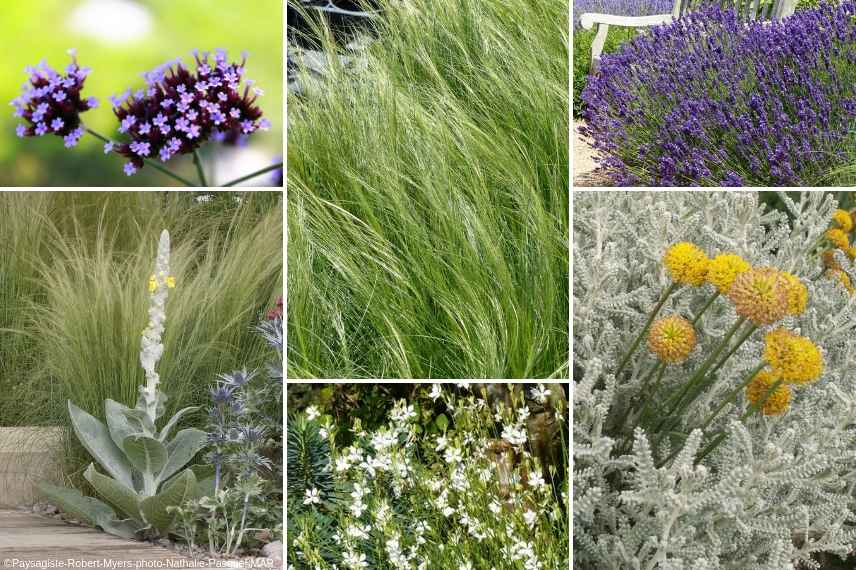
Verbena bonariensis, Verbascum bombyciferum ‘Polarsommer’, Stipa tenuifolia, Gaura lindheimeri ‘Snowbird’, Lavandula angustifolia ‘Hidcote’ and Santolina chamaecyparissus
What type of soil?
All these plants are hardy down to -15°C in perfectly drained soil, noting that to give their best they need plenty of sun and heat, as well as poor, drying, calcareous and stony soil.
Autumn planting combination
Autumn rhymes with colour (or nearly)! And autumn is not just about blazing foliage. This colourful border is made up mainly of dahlias (sun-loving plants par excellence) and heleniums, but you could also add asters, miscanthus, sedums or why not the superb Rudbeckia subtomentosa ‘Henry Eilers’ ?
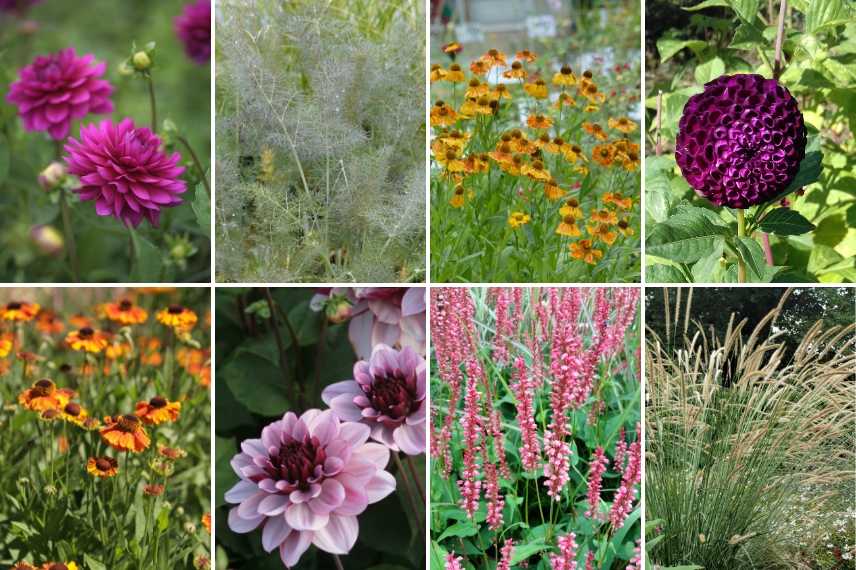
Dahlia ‘Berner Oberland’, Foeniculum ‘Giant Bronze’, Helenium ‘Waltraut’, Dahlia ‘Rocco’, Helenium ‘Sahin’s Early Flowerer’, Dahlia ‘Crème de Cassis’, Persicaria amplexicaulis ‘Orange Field’ et Pennisetum macrourum
What type of soil?
This border will do best in light, fertile, cool but well-drained soil to prevent the tubercules of dahlias from rotting. Pennisetum needs perfectly drained soil and its hardiness does not exceed -10°C. If that’s too marginal where you are, replace it with a Miscanthus (‘Malepartus’, ‘Sarabande’, ‘Grosse Fontäne’, etc)
- Subscribe!
- Contents
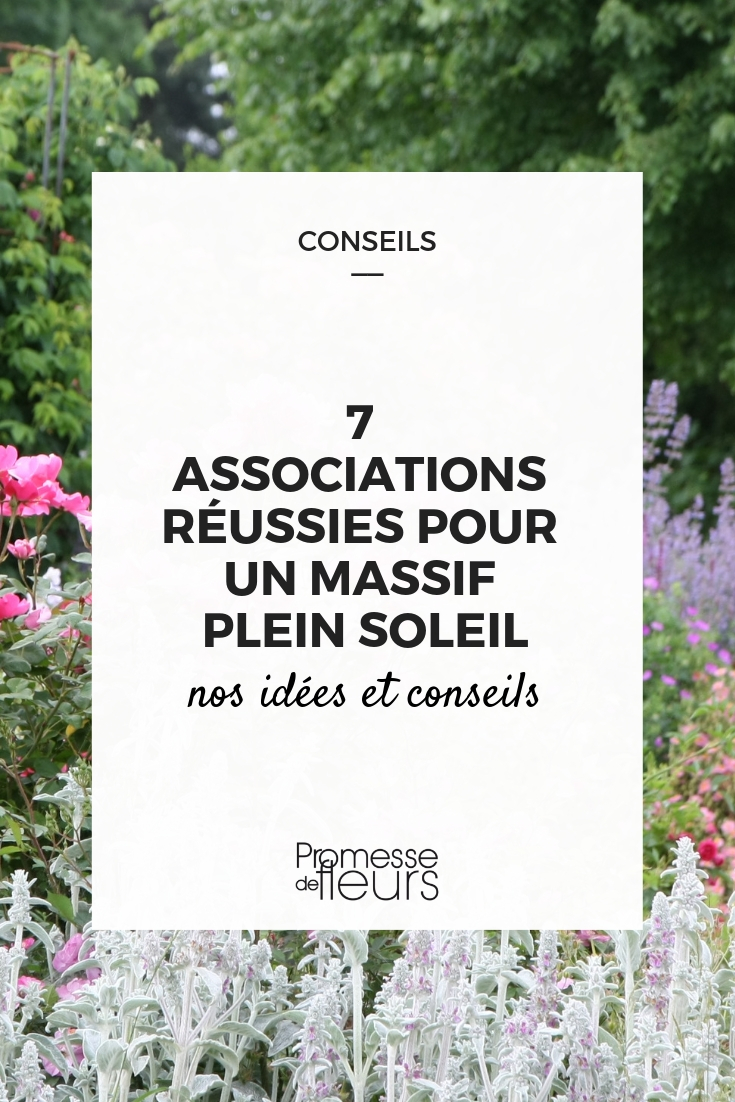































Feedbacks